Probably the most vital part of being a dedicated RC enthusiast is taking the hobby to the next level and getting out to the race track. If you don’t have a clue where to start, there are tons of organizations that cater to the RC cars hobbyist and make available listings of local or regional clubs – as well as some national ones.
So if you’re looking for a track to do some RC car racing in your neighborhood there are several online directories you can use, but the one with the most comprehensive information is offered here at RC Universe (http://www.rcuniverse.com/community/locator.cfm).
You can find RC racetrack listings for pretty much anywhere in the world, from South Africa (which actually has a very wide selection of tracks) to Vietnam (which has one), and of course the United States, Canada, and Europe.
The thing that is most helpful about this directory is that it also tells you whether the track is indoors or outdoors, off-road, oval, dirt oval, carpet, concrete or asphalt, whether there’s AC power, food available or an RC hobby shop on site. This really helps you weigh your options if there is more than one racetrack in your area.
Two Major Parts Of Racing
When you’re new to the scene, it’s hard to know how and where to get started. Like already mentioned, first find a track in your area just to make sure you can have a place to go and get started. Now, the two most vital parts of racing are the racing aspect itself and getting your RC car/track ready to be on the track.
- Tuning/preparing your vehicle
- What goes on at the track
Two Parts
The first part of this article is how to tune your vehicle for racing conditions. The second part of this article is what to do once you’re at the track. Go to the racing part, if you already know how to tune your car.
PART I
Tuning/Preparation – What To Bring
So it’s your first race day, and as the first day of school, there is a list of RC supplies you should have with you. First off, make sure you have all the necessary tools in your RC Tool Kit before you decide to hit the track. Although some meets may have many of the amenities you’ll need to repair, it’s always wise to come prepared. Especially since it’s your first day at the track, your excitement level may be slightly elevated, and there may be a good chance your rig could take a beating. Pack yourself a tool kit with all your:

- Hex keys
- Screwdrivers (large and small)
- Wrenches
- Exacto knife
- Needle-nosed pliers
- Any unique tools for your model

You should also carry:
- Fresh RC car batteries
- Fuel if you’re running nitro
- Oil
- Spare tires
- Spare glow plugs
- Your car’s manual
Battery and Fuel
First and foremost whether you’re running Electric or Nitro, you need to have batteries that are fully charged, in good condition and ready to perform the task at hand – kicking some major butt on the track!
For the Electric RC enthusiast, batteries serve as the sole power plant in your rig and have the potential of making race day nothing more than an exercise in futility if they aren’t in tip-top shape. So, in order to avoid some serious hassle, check these before travelling to the track, and if you’re planning a full day of racing, spare batteries are a must.
Also, take along your charging unit so you can charge between races. These are available in a 12vdc and 110vac units that can charge from both voltages. If there is no 110V power at your track these can plug into your car lighter when out racing and into your home outlet when you’re back in the workshop.

In case you didn’t know, all batteries have a rating on them that is measured in Milliamp Hours (mAh). A lot of the stock 7.2v batteries are rated at 1400mAh and will give you a run time of approximately 6-10 minutes. Larger batteries rated at 1700mAh and higher will give you longer run times but require high quality “peak chargers” that will not harm the cells.
Also, keeping your car clean, replacing stock bushings with ball bearings and upgrading your mechanical speed control with an electronic one will be great improvements in getting the most from your batteries. You can also check out how to clean your electric brushless motor.
Note: Be sure to ask your local hobby store for a charger that will match your batteries. Failure to do so could result in ruining your batteries, your charger (or both) – or it could cause personal injury (and that’s far too lame of a way to hurt yourself) – so be careful!
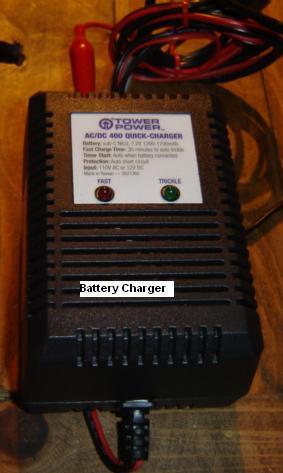
For those of you running Nitro RC cars & trucks, fuel will, of course, be one of your main concerns. Check your manual and follow the recommended fuel type as outlined by the manufacturer. Running a 20% or as high as 30% nitro is quite common. Here again, the fuel must not be compromised in any way. Old or bad fuel will only lead to ignition and performance issues to ensure your fuel is top-notch, and/or better yet, new!
Related: How to tune your nitro engine.
The Inner Workings
Okay, let’s take off the body and do a walk around. In order to really understand what makes your RC car tick, and how best to handle it on race day, you need to understand it’s inner-workings. So to help with that, we are going to inspect all areas where there is motion. This pretty much means the whole RC car.
What are we looking for? Well, if you haven’t already done so at home, you will notice there are a lot of “parts” to these machines – so you should take a look and make a quick check of some of the more obvious areas to make sure everything is in working order.
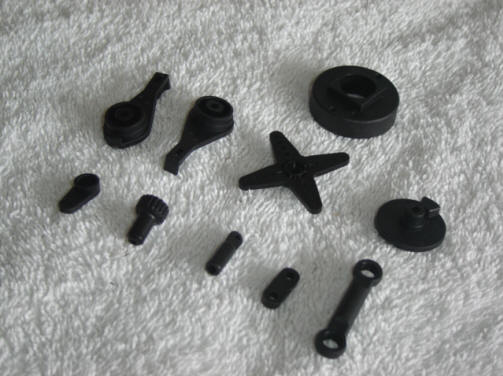
As we move around the vehicle, check to make sure all nuts and bolts are snugs. Depress the shocks and look to make sure the suspension system is not binding. If so you will need to make some adjustments until it is corrected, otherwise, it may make handling the car very difficult.
Nitro users need to ensure the fuel and vacuum lines are in good condition, and not dried out or they become brittle and will leak fuel and/or introduce excess air into your mixture. One thing you should consider getting, which is an aftermarket part, is an in-line fuel filter (see picture below). This device filters your fuel from dirt, water, and other harmful particles. Your motor is designed in a way so that it shouldn’t get foreign debris in it, and having one of these is a must-have if you’re serious about RC racing.
You should also make sure there is adequate clearance from any hot spots around the engine or exhaust areas. Turn on your receiver, and then your radio and check to make sure your RC servos are all working well. Here again, making sure none of the control arms are hitting any part of the body or other areas.

If you’re running Electric, look at your battery connections and solder points. Any cold solders (solder points that look dull as opposed to shiny) or leaking batteries will have to be repaired or replaced.

*not actual RC solder points
Before we go ahead and take a look at some updated parts or modifications, I’ll let you know that it is my preference to run with all the original stock parts, at least until I’ve gotten a basic idea of how my car handles. This will give you a starting point, as any alterations to your RC car will have an impact and sometimes profound effect on its performance, stability or handling. Too much too fast will not get you to the finish line any sooner if you don’t do it right.
Modifications For Performance
For Nitro cars, carburetion, fuel/air mixtures, exhaust temperatures, and other important aspects of the nitro-fueled engines should be followed as per the manufacturer’s specifications. There is room for adjustments and you’re allowed to make changes, but it is also important to follow the manual’s fairly strict “break-in” procedures. Traxxas has great instructions for breaking in nitro engines.
Even once your engine has a few tanks of the right fuel mixture put through her, there are still many factors that need to be considered when tuning for performance. These include your track’s elevation from sea-level, temperature, and humidity. Also, it makes a difference if you’re running on a compacted dirt track or asphalt, or perhaps concrete if your race track happens to be indoors. Basic tuning will consist of adjusting the fuel mixture for lower speeds and another type of mixture for higher speeds. If you’re unsure about how to do this, you should follow your manufacturer’s recommendations applicable to your make and model.
Air Filters
You should also consider replacing your stock air filter with an aftermarket one. A bigger, better air filter has more surface area and will allow your engine to breath better. This will enable the engine to reach its peak rpm….resulting in a faster vehicle.
Don’t forget to soak your new filter in oil, squeezing out any excess before putting it to use. Air cleaner oil has a special additive that attracts dust and dirt particles, so don’t overlook this important step. RC engines are a marvel of engineering and are capable of very high rpm. Some reach as high as 40,000 rpm. Considering the car in your driveway peaks at maybe 7000 rpm, it’s easy to see the difference. A tremendous amount of vacuum is created and by having a high-performance air filter and your nitro engine will be much happier. Check and clean your air filter each hour of running to prevent debris from being sucked into the engine.
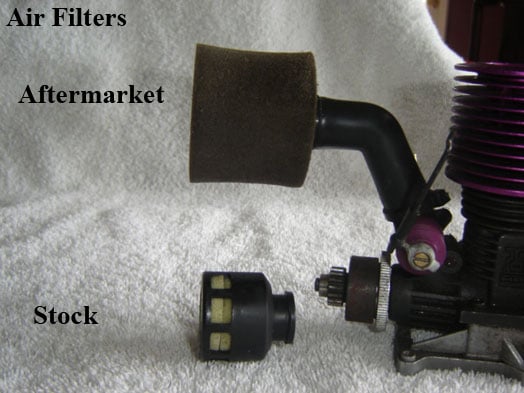
Stock Bushings vs Metal Ball Bearings
For the more competitive racer, engine modifications are the number one mod. Even at this entry-level stage, you may want to consider changing out the stock bushings that came with your car or truck with sealed RC ball bearings.
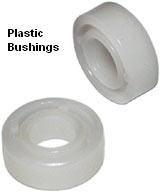 These units are made of a harder material and withstand the extra forces put on the motor, as well as being “sealed” which helps in keeping out dust, dirt, and water.
These units are made of a harder material and withstand the extra forces put on the motor, as well as being “sealed” which helps in keeping out dust, dirt, and water.
 Also, bushings tend to wear down the driveshaft and if you use them for too long, new bearings won’t fit. Make sure you consult your manual as these can be tricky to replace. If this task is too difficult, just take it to you’re nearest hobby store and have their techie give you a hand.
Also, bushings tend to wear down the driveshaft and if you use them for too long, new bearings won’t fit. Make sure you consult your manual as these can be tricky to replace. If this task is too difficult, just take it to you’re nearest hobby store and have their techie give you a hand.
Fuel Mixtures
Fuel mixtures and carburetion adjustments are a whole article in itself as they can have profound effects on your engine. Most if not all models that are RTR have been preset and your RC car or truck should start as soon as you have added fuel and power to the glow plug. Your model should have come with a “tuning card” that shows the recommended fuel/oil mixture, hi and low-speed carburetor adjustments and idle screw settings. You will also find the “break-in” procedure for your specific model, which needs to be followed very closely or damage to the motor may occur.
Burn Some Rubber – Choosing The Right Tires
Next, you’ll likely want to upgrade your tires from the ones that came stock with your RC car or RC truck, which are generally harder and put less emphasis on the grip and more on lasting for a long time. However, if you want a good grip on the racetrack you’ll need something with more treads than stock tires. There’s a wide variety to choose from online and at your local hobby shop, but here are a few basic types to give you an idea of what’s out there:
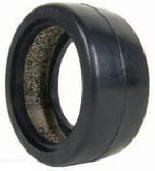
You may want to go check out the type of terrain at the track you’ll be running before buying your tires. First are street tires, which are designed specifically for really hard surfaces like pavement and asphalt.
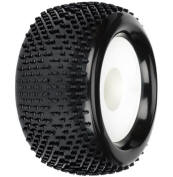
Bowtie tires are generally better as back tires; they are long-lasting and are better for tracks where the turf is packed tight.
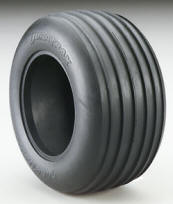
Ribbed-front tires work best on the front axle and have a different grip pattern suited to a wide range of tracks. All-terrain tires are what the name implies, and can rip up mud, asphalt, you name it.
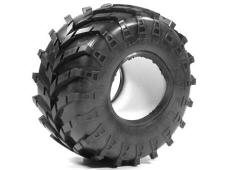
If you’re still not sure what to get, ask a fellow racer at the track, or a salesperson at your local hobby shop to give you some advice for picking the tires for your specific vehicle and needs. Hardcore racers have all types of tires on hand, but just get what you need for your local/closest racetrack for the meantime.
When it comes down to it, tires can make or break your race and play a huge part in controlling how your car handles, specifically in the corners. depending on your car, you may have softer or harder tires in the front than the rear, or vice versa. Only experimentation will tell. Try to buddy up to some of the “pro’s” and see if they can offer you some suggestions.
Keeping The Rubber On The Pavement
All that power and acceleration won’t get you to the finish line if you can’t keep your tires on the ground, so suspension components on these machines have to be very efficient. The stock set-up as it was delivered to you in should be adequate for your first few races though. From there you can make modifications to springs, the oil, and the pistons.
The thing to do is to keep testing until you find the right combination that works for your type of driving and environment. Be sure that any changes to the suspension you do make are done in pairs. Mod’s done to a single shock will affect how controllable your model is. Never change just one spring, even if it’s the same make and model as the older one, it will not have the same characteristics as the newer ones. Once you get this dialed in, it will provide you with more stability, better handling.
PART II – How To Race And What To Do At The Track!
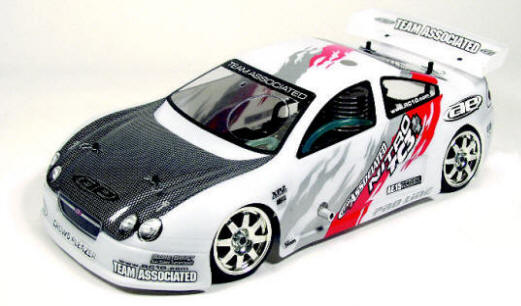
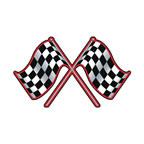 Okay, so when can we race?? Well, now that we are confident that everything is ready to roll, you’re pretty much ready. Before going, make sure you spend a good couple days applying the tuning techniques above, as well as practice racing by yourself. Practice RC drifting, turning, accelerating around corners and really get the feel of how your car handles. Practicing before you go will drastically improve your results the first time you hit the track and help you with your confidence.
Okay, so when can we race?? Well, now that we are confident that everything is ready to roll, you’re pretty much ready. Before going, make sure you spend a good couple days applying the tuning techniques above, as well as practice racing by yourself. Practice RC drifting, turning, accelerating around corners and really get the feel of how your car handles. Practicing before you go will drastically improve your results the first time you hit the track and help you with your confidence.
Depending on your location, you may have to get yourself registered. So find someone that looks like they know their way around the track and get some sound advice. You will no doubt find most, if not all racing enthusiasts friendly and more than willing to help you out. It will be nerve-wracking at first, I won’t deny that, but you need to start somewhere – don’t be afraid to ask questions and dive in headfirst.
Transponder, Frequency, Crystals
So first things first. When you get to the track, you’ll need to sign up on the list. Each person’s transponder (radio receiver, the device that controls your RC car) has a thing called a ‘frequency.’ Basically, each radio has its own channel where it can send signals to the car, allowing you – and not someone else – to control the car. If each person has the same frequency, that means that other people will be able to control your RC car – so it’s important that everyone has their own frequency. Kind of like a walky-talky – if you’re tuned into ‘channel 5’ and other people are too – they can hear your conversation.
At the bottom of your receiver, you’ll have a spot where you can switch in and out ‘crystals’ (the actual chip, displayed on the right).
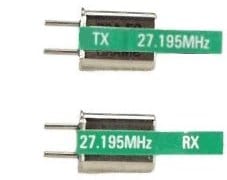 Seasoned racers usually have back up frequency clips because it’s bound that someone will be using the same frequency as you. So, when you get there, most people will be just practicing, testing out the track, etc. For now, it’s all casual. If someone is using your frequency, and you don’t have any backup chips (so that you can race on a different frequency) – go find the person that’s using yours and see if they can use their back up one for the time being. Most tracks will have set out the specific frequencies that are required.
Seasoned racers usually have back up frequency clips because it’s bound that someone will be using the same frequency as you. So, when you get there, most people will be just practicing, testing out the track, etc. For now, it’s all casual. If someone is using your frequency, and you don’t have any backup chips (so that you can race on a different frequency) – go find the person that’s using yours and see if they can use their back up one for the time being. Most tracks will have set out the specific frequencies that are required.
So, when you sign up, they’ll ask you for some money, your name, and frequency, which class your in (if you’re new, you won’t be in any class). Then they’ll start to get organized so you can just go and practice some more on the track, talk to other racers, etc. There’s really no pressure, so don’t be shy. You don’t need to win the race right off the bat, just warm yourself up to it.
Don’t be surprised if they want to inspect your RC car either. This is normal, just like the big guys,
NASCAR or Formula One, they want everyone to be on the same “level” as far as performance. It will be your driving skills alone that will put you on the podium. Some things they
will be looking at are of course:
- The engine
- Tires
- Ride height
- Vehicle weight, etc.
- Modifications you’ve made to the vehicle
No worries, they may not be that strict with the novice and beginner categories, but it does come into effect when you graduate to the next levels.
Qualifiers, Driver Categories, Mains
Most, if not all tracks, have “driver categories” so that you don’t find yourself trying to compete against someone that’s in a much higher class than yourself. They could have a “Juniors” and a “Masters” category. They may also have a “Novice” and “Beginners” as well. So you should have no problem fitting in somewhere. Be sure to bring some identification, just in case you asked to prove your age as well. Some categories have age restrictions.
Usually what they’ll do is have a couple of qualifier rounds to determine which category you’re going to be in. You’ll run a few races to determine your skill and the amount of time it takes you to get around the track, etc. They’ll organize the transponders by either color, name or numbers, etc. You’ll get a specific transponder so that you can race on your own frequency. Since each track is different, you’ll need to ask how they organize their transponders for race time.
After qualifiers are over, you’ll break for a bit and get to tune up your vehicle or just practice, etc. Then they’ll put you in a ‘main.’ A-main is for the ‘experts’, B-main is the next 8 fastest people, C-main is the same, etc. Depending on your track, there might not be enough people to have that many mains. Check the sheet to see what main you’ve been placed in, and what transponder you’re going to use for the race. These are the actual races. The whole process of qualifiers, mains, and practicing will be long – so you need spare RC batteries (a few – fully charged) and fuel during the time you’re at the track.
Marshaling
One aspect you might be wondering about is, “what happens if I flip my RC car over or spin out? Will I be disqualified, or asked to leave?” The answer is no. What happens is the people that raced before you will be asked to “marshall” for you. This means they will be out on the track…working for you. If you happen to spin out or flip off the track, this “marshall” will get your RC car back on the track as fast as possible.
They are not allowed to fix your RC car, and in the event that your car becomes disabled, your vehicle will be moved to the outer edge of the track – out of the way of other racers. You will not be allowed to retrieve your car until the race is over. When your race finally does come to an end, it will be your turn to “marshall” for the racers in the next race. As you can see, everybody helps everybody. It really is a great way to spend your afternoons and getting to know your fellow racers.
Final Word
If you’re serious about continuing with racing, you will want to join your local racing association. They will give you a rule book which will cover every aspect of the do’s and dont’s in great depth.
After a couple of times out in the track, you’ll get the feel of it more and start understanding how the whole racing environment works. No matter what level you’re at, the first day is bound to be a day to remember!
One of the most important things about RC car racing is meeting some of your fellow racers. Talking to people will lead to long term friendships, and hopefully a sense of community. People you meet will likely be more than generous when it comes to lending a helping hand. This will only fuel your knowledge as you gain experience.
Although, there may come a time when they might be less willing to share some finer aspects of nitro car tuning. Why do you ask? It’s because you have now come of age and pose a real threat to the racing circuit! Hope these tips have helped you on your way to being a star racer – now go tear that race track apart!






